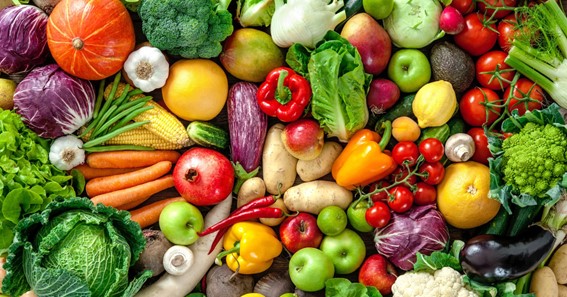Are you curious to know what is the national vegetable? You have come to the right place as I am going to tell you everything about the national vegetable in a very simple explanation. Without further discussion let’s begin to know what is the national vegetable?
What Is The National Vegetable?
Every country takes pride in its national symbols, which often include flags, anthems, animals, and flowers. But have you ever wondered about the national vegetable? While it might not be as commonly known or widely celebrated as other symbols, many countries have officially recognized vegetables that hold cultural and historical significance. In this blog, we embark on a journey to explore some countries’ national vegetables and the rich culinary diversity they represent.
United States: Sweet Corn
In the United States, sweet corn holds the prestigious title of the national vegetable. Native Americans first cultivated this crop centuries ago, and it has since become an essential part of American cuisine. Sweet corn’s widespread popularity is evident during summer months when farmers’ markets and roadside stands offer freshly picked ears to eager consumers. Whether boiled, grilled, or turned into creamy corn chowder, sweet corn symbolizes the nation’s agricultural heritage and appreciation for locally grown produce.
India: Pumpkin
India, a land of diverse cultures and flavors, has recognized the pumpkin as its national vegetable. Rich in nutrients and versatile in its usage, the pumpkin is a staple ingredient in many regional dishes. From the comforting pumpkin curry in the north to the spicy pumpkin sambar in the south, this vegetable plays a vital role in Indian cuisine. Beyond the kitchen, pumpkin also carries cultural significance during festivals like Diwali, where intricately carved pumpkins illuminate homes and streets.
France: Leek
In France, the leek, known as “poireau” in French, has been honored as the national vegetable since the time of King Louis VII. The leek’s association with France dates back to the ancient Roman era when it was believed to possess health benefits and strength-giving properties. Today, leeks are widely used in French cooking, adding a subtle onion-like flavor to classic dishes like soups, quiches, and stews. The annual “Fête du Poireau” (Leek Festival) in Saint-Viaud celebrates this vegetable’s significance in French culture.
United Kingdom: Brussels Sprouts
While the United Kingdom doesn’t officially have a national vegetable, Brussels sprouts have long been considered a symbol of British cuisine, particularly during Christmas dinners. These miniature cabbages have gained popularity across the country and are often roasted, steamed, or pan-fried as a delicious side dish. Their presence on festive tables represents the importance of seasonal produce and traditional family gatherings.
Japan: Eggplant
In Japan, the eggplant, or “nasu” in Japanese, holds cultural significance and has been a part of the country’s culinary heritage for centuries. This versatile vegetable finds its way into numerous Japanese dishes, such as tempura, miso-based dishes, and the popular eggplant roll, “nasu no abura-age.” The eggplant’s deep purple color and glossy texture are admired as much as its delicious taste, making it an integral part of traditional and modern Japanese cuisine.
Conclusion
While the concept of a national vegetable might not be as universally recognized as other national symbols, these vegetables symbolize the rich cultural heritage and culinary diversity of different countries. They remind us of the deep connections between food and culture, and the significance of agriculture in shaping our history and traditions.
As we celebrate these national vegetables, let’s also appreciate the efforts of farmers, chefs, and food enthusiasts who continue to preserve and innovate with these essential ingredients. Exploring the unique flavors and culinary practices of different cultures not only broadens our palates but also fosters a sense of unity and appreciation for the diverse and vibrant world of gastronomy.
FAQ
What’s The National Vegetable?
The national vegetable of India is the Indian pumpkin, commonly known as ‘kaddu’. It grows all over India, doesn’t need excellent soil qualities, and spreads readily as a climber or creeper.
What Is The King Of Vegetables?
The brinjal was given the title of King of Vegetables because of its astonishingly awesome purple covering, and also the juicy and rich nutritional values in them. Eggplant, aubergine, and brinjal are members of the Solanaceae family.
What’s The National Vegetable Of India?
Indian national vegetable is known as Indian pumpkin or kaddu. This Indian vegetable, popularly referred to as `Kaddu` in Hindi, grows throughout India, doesn’t require unique soil conditions, and may be used as a climber or creeper.
What Is The Vegetable Name For Pumpkin?
pumpkin, fruit of certain varieties of squash—such as varieties of Cucurbita pepo, C. moschata, and C. maxima—in the gourd family (Cucurbitaceae), usually characterized by a hard orange rind with distinctive grooves. Pumpkins are commonly grown for human consumption, for decoration, and also for livestock feed.
I Have Covered All The Following Queries And Topics In The Above Article
What Is The National Vegetable
What Is The National Vegetable In India
What Is The Indian National Vegetable
What Is The National Vegetable Of Our Country
What Is The National Vegetable Of China
What Is The National Vegetable Of India?
What Is The Name Of Our National Vegetable
What Is The Name Of National Vegetable
What Is The National Vegetable Of Pakistan
What Is The National Vegetable
What is the national vegetable 🍆
What is national vegetable of India?

